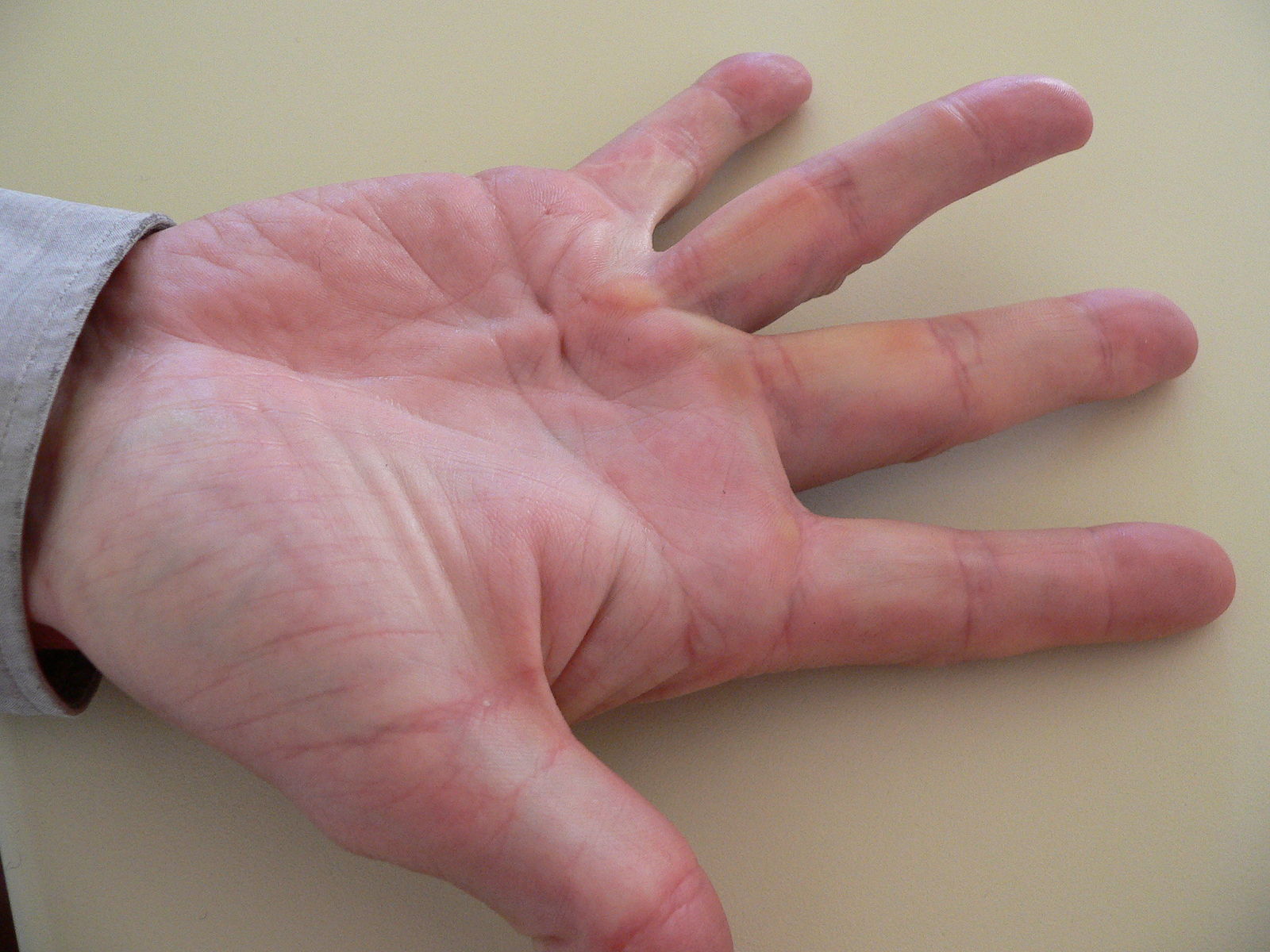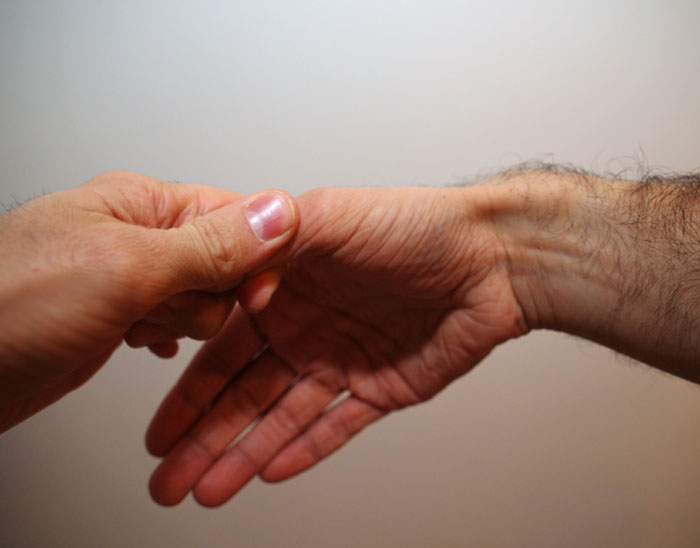Difference Between Dupuytren’s and De Quervain’s Conditions
What is Dupuytrens Contracture and De Quervains Tenosynovitis?
Both are conditions of the hand.
Dupuytrens Contracture
Dupuytren’s contracture is a medical condition that happens because of the thickening of palmer fascia leading to contracture of the fingers towards the palm. It is not a painful disorder though severely effects the ability of a person to carry out simple day to day activities such as holding a cup of coffee, picking up things and even writing. Many treatment options for this condition are available. The prognosis for patients suffering with this condition is very good.
De Quervains Tenosynovitis
This condition is also called radial styloid tenosynovitis. It is described as a painful inflammatory condition that results in pain and tenderness in the tendons along the thumb side of the wrist. This condition occurs when the tendons around the base of the thumb experience constriction and irritation due to overuse. This disease causes pain along the thumb side of the wrist when some tasks like gripping, grasping, picking and turning the wrist.
Difference between Dupuytrens Contracture and De Quervains Tenosynovitis
Description
Dupuytrens Contracture
It is a hand deformity that develops gradually over the years. In this disease, gradual tightening and thickening of tissues under the hand skin.
De Quervains Tenosynovitis
A painful condition that affects the tendons along the thumb side of the wrist.
Causes
Dupuytrens Contracture
- Possibly hereditary
- More frequent in patients with alcoholism, diabetes mellitus and epilepsy (seizure disorders)
De Quervains Tenosynovitis
- Chronic overuse of the wrist
- Inflammatory arthritis, like the rheumatoid arthritis
- Direct injury to the tendon or wrist; scar tissue limits the movement of the tendons
Symptoms
Dupuytrens Contracture
- Often impacts both hands
- Lack of ability to place the hand flat on a table
- Pits and lumps under the palm skin that may be painful and tender
- Lack of ability to grasp large objects
- Thick cords on the palm in line with the fingers
- Lack of ability to put hands into pockets
- Cords causing contracture or bending of the fingers into the palm
De Quervains Tenosynovitis
- Tenderness and swelling
- A “stop-and-go” or “sticking” sensation in the thumb while moving it
- Pain and discomfort near the base of the thumb
- Inability to move wrist or thumb while pinching or grasping
- A “snapping” or “catching” sensation while moving the thumb.
- The pain in the thumb is experienced either suddenly or gradually and it travels up the forearm. The pain becomes worse when the thumb and hand are in use.
Diagnosis
Dupuytrens Contracture
- Examination of your hands for nodules or lumps
- Table top test – You are asked to put the palm of your hand flat on the table. It is unlikely that you are able to do this if you have this condition.
De Quervains Tenosynovitis
- Hand is checked to see if it is hurting when pressure is put on the thumb side of the wrist.
- The Finkelstein test- In this test, you are asked to bend your thumb across the palm. Then you will be bending the fingers down the thumb to create a fist. This motion will stretch your tendons. If you experience pain on the wrist’s thumb side, means you have de Quervain’s tenosynovitis.
Treatment
Dupuytrens Contracture
Nonsurgical Treatment for Dupuytren’s Contracture include:
Stretching
Stretching is usually recommended for the mildest forms of Dupuytren’s.
Steroid Injections
Strong anti-inflammatory drugs are recommended to be injected into a Dupuytren’s nodule to bring down the size of nodules in the beginning course of the disorder. These are however not very effective when thicker tissue has formed in the later stages of Dupuytren’s.
Steroid injections slow down the progression of the disease but will not help in straightening the affected finger in case it already has contracture.
Enzyme Injections
Xiaflex is recommended in case the finger is bent. Xiaflex is a mixture of enzymes which is injected for breaking the tough tissue in the affected area. The enzyme loosens the tissue. Doctor recommends 1 or 2 injections in the affected joint. However, some patients need 3 injections for straightening the bent finger.
Radiation Therapy
Radiation therapy helps in reducing the symptoms and prevents swelling in the nodules and skin that are a result of Dupuytren’s contractures.
Surgical treatment
Open Surgery
In an open surgery, an incision is done to either divide (fasciotomy) or remove (fasciectomy) part or all of the affected thick bands of tissue. Skin grafting is done to close the wound.
Needle Aponeurotomy
In this, a hypodermic needle is used in dividing and cutting the affected tissue in the fingers and the palm. This method is less invasive and promises a quicker recovery than open surgery.
De Quervains Tenosynovitis
Self-care
RICE – (Rest, Ice, Compression, Elevation)
Nonsurgical Treatment
- Splints – These are used to comfort and rest the wrist and the thumb.
- Anti-inflammatory medication (NSAIDs) – These drugs bring down swelling and reduce the pain.
- Corticosteroids – Corticosteroids injections into the tendon sheath help in lessening the pain and inflammation.
- Avoid repetitive thumb movements as much as possible
Surgical Treatment
Surgical treatments are recommended if the symptoms are severe. The aim of surgery is to open the sheath compartment (covering) to release the pressure so that the irritated tendons are able to glide freely. Post-surgery precautions are suggested by the doctor as to how to rest, strengthen and rehabilitate the body after surgery.
Summary
The points of difference between Dupuytrens Contracture and De Quervains Tenosynovitis have been summarized below:
Dupuytrens Contracture vs. De QuervainsTenosynovitis: Comparison Chart
- Difference Between Global Warming and Greenhouse Effect - May 18, 2024
- Difference Between Vaccination and Immunization - March 3, 2024
- Difference Between Selective Mutism and Autism - February 25, 2024
Search DifferenceBetween.net :
1 Comment
Leave a Response
References :
[0]Image credit: https://commons.wikimedia.org/wiki/File:Originaler_Finkelstein-Test.jpg
[1]Image credit: https://commons.wikimedia.org/wiki/File:Morbus_dupuytren_fcm.jpg
[2]Lo, S., & Pickford, M. (2013). Current concepts in Dupuytren’s disease. Current reviews in musculoskeletal medicine, 6(1), 26-34.
[3]Satteson, E., & Tannan, S. C. (2017). De Quervain Tenosynovitis. In StatPearls [Internet]. StatPearls Publishing.




Very good